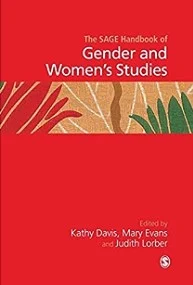 |
| Handbook of Gender and Women′s Studies by Kathy Davis |
About the Book
The "Handbook of Gender
and Women's Studies" is a comprehensive reference book that provides an
in-depth exploration of the field of gender and women's studies. Edited by
Kathy Davis, Mary S. Evans, and Judith Lorber, the handbook offers a collection
of essays written by various scholars and experts in the field. It covers a
wide range of topics related to gender, women's experiences, feminism,
sexuality, and social theory.
Inside the handbook, you can
typically find:
1. Introduction: An
overview of the scope and significance of gender and women's studies as an
academic discipline.
2. Thematic
Sections: The content is often organized into thematic sections or
chapters, each focusing on a specific aspect of gender studies. These sections might
include topics such as:
·
Feminist theory and its evolution
·
Intersectionality and multiple identities
·
Gender and sexuality
·
Masculinities studies
·
Gender and work
·
Family and relationships
·
Gender and politics
·
Gender and health
·
Gender and globalization
·
Feminist activism and social change
3. Contributions: Each
chapter is typically authored by different scholars, providing in-depth
discussions, analyses, and critical perspectives on the chosen topic. These
contributions often integrate theoretical frameworks, empirical research, and
case studies to provide a comprehensive understanding of the subject matter.
4. Interdisciplinary
Approach: The handbook may draw from various disciplines, including
sociology, anthropology, psychology, cultural studies, history, and more, to
offer a multidimensional view of gender and women's studies.
5. Theoretical
Frameworks: The handbook might delve into various feminist theories
and conceptual frameworks, such as liberal feminism, radical feminism, queer
theory, postcolonial feminism, and more.
6. Critical
Reflection: The authors often engage in critical discussions,
addressing current debates, challenges, and emerging trends within the field.
7. Cross-Cultural
and Historical Perspectives: The handbook might explore gender issues
across different cultures, historical periods, and geographical locations.
8. Bibliographies
and Further Reading: Many chapters include lists of recommended
readings and references for readers interested in exploring specific topics
further.
Overall, the "Handbook of
Gender and Women's Studies" serves as a comprehensive guide for
researchers, students, and anyone interested in gaining a deeper understanding
of gender and women's experiences from a scholarly perspective. It provides a
rich collection of insights, analyses, and discussions that contribute to the
ongoing discourse within the field of gender studies. Keep in mind that the
content and structure of the handbook may vary depending on the edition and
publisher.
